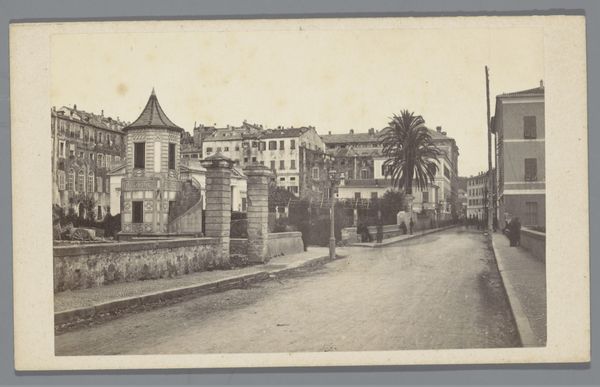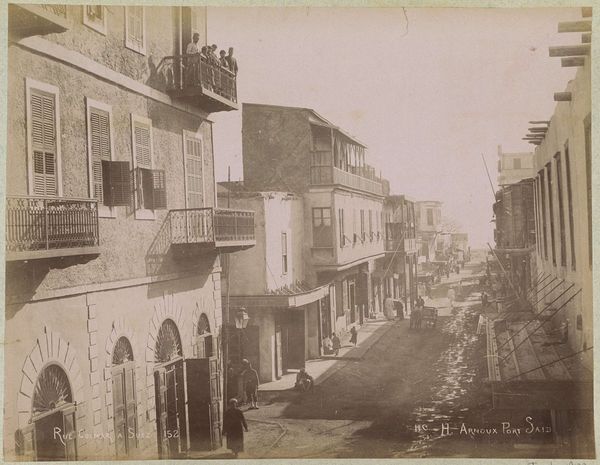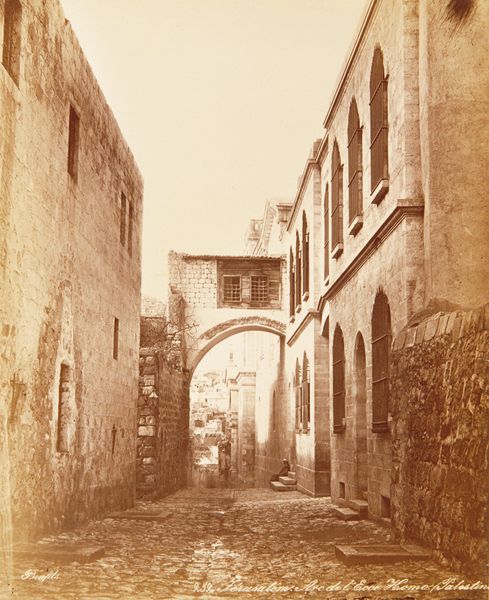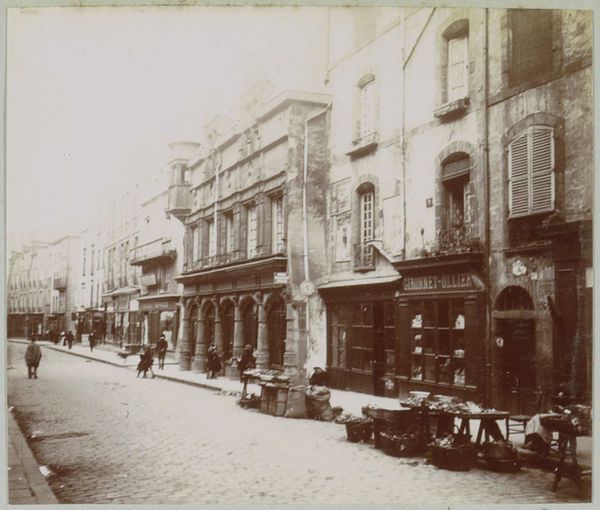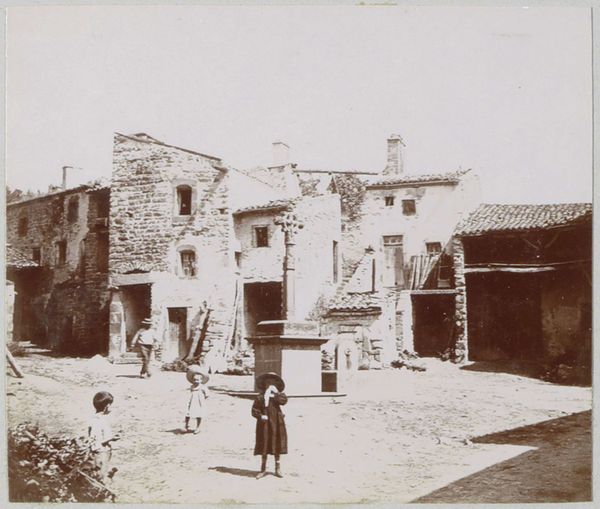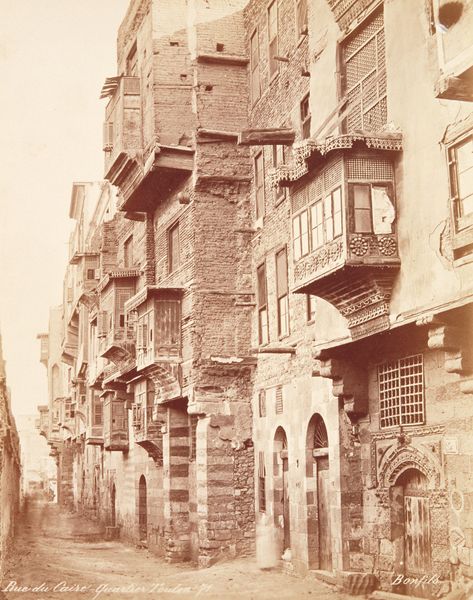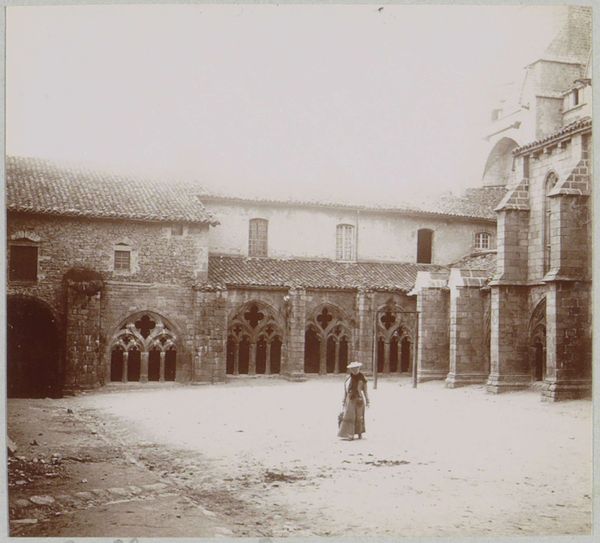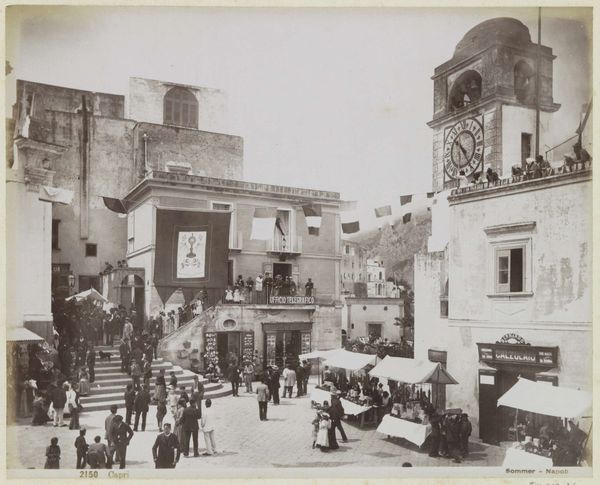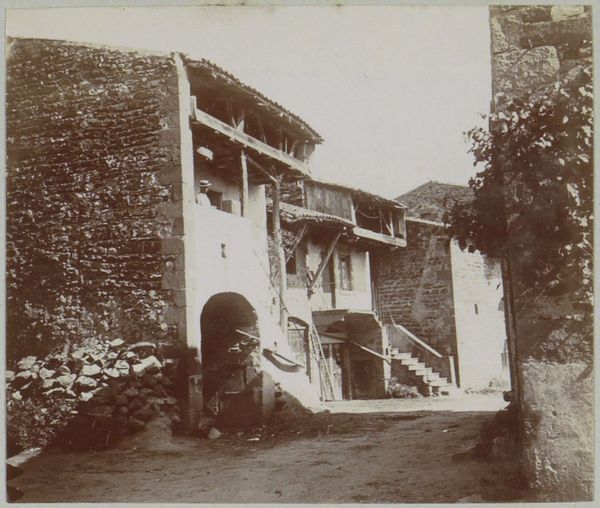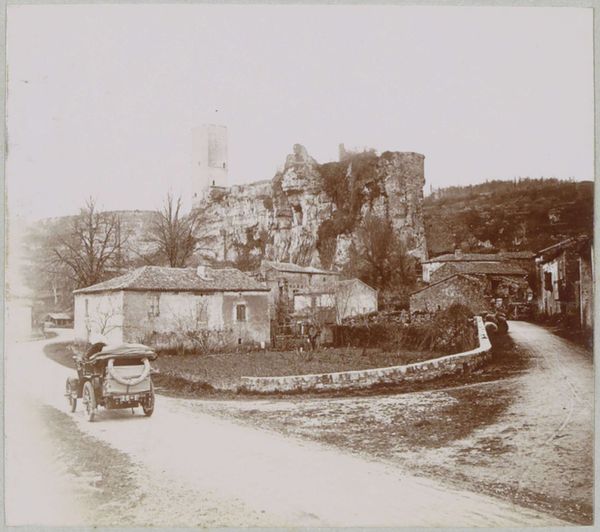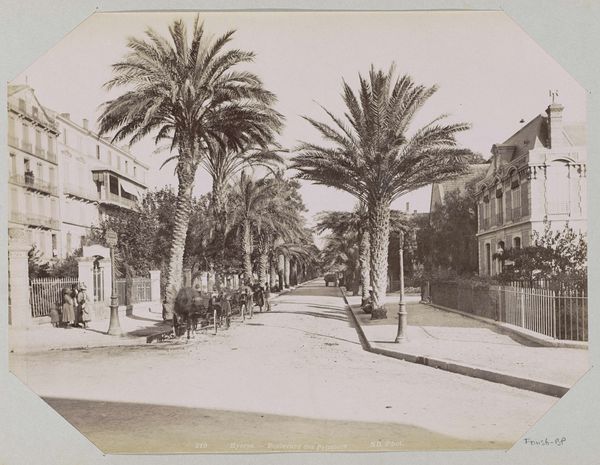
print, photography, architecture
# print
#
photography
#
romanesque
#
cityscape
#
architecture
Dimensions: height 69 mm, width 82 mm
Copyright: Rijks Museum: Open Domain
Editor: Here we have a photograph from 1902 of the "Tempel van Diana in Le Puy-en-Velay". It's currently at the Rijksmuseum. I’m really drawn to the rough texture of the stone in this print. What stands out to you? Curator: Well, first off, "Tempel van Diana" is a misnomer. This Romanesque architecture likely repurposed older materials. Think about where that stone came from, the labor involved in quarrying it, transporting it, carving it…each step reflects societal power structures. The photographic process itself is material – what kind of paper, what kind of development? All crucial for understanding how this image functions as a historical record and a crafted object. Editor: So, not just *what* is depicted, but *how* it was made that matters. The physical effort of building something like this...it's easy to overlook. Curator: Exactly. Consider how the choice of perspective—a public square—contextualizes this building. Is it really divorced from the people using the square, engaging with public notices posted on the wall? The labor isn't just in building the temple, it's in its ongoing maintenance and incorporation into daily life. Editor: That reframes everything. I was initially just thinking about aesthetics, but it's all connected. Thanks! Curator: Of course. Analyzing art involves deconstructing the layers of production, consumption and social meaning embedded in materials and processes. A lot to think about with just one photo!
Comments
No comments
Be the first to comment and join the conversation on the ultimate creative platform.

